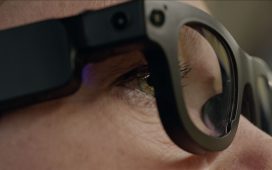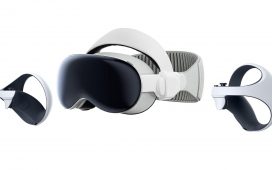According to a Wall Street Journal report, Meta may be looking to some of Hollywood’s top brands to produce exclusive content for its next XR headset, which is expected to feature a completely new thin and light design when it reportedly ships next year.
Citing people familiar with the matter, Meta has recently been in talks with a number of entertainment brands, including Disney, A24, and smaller production companies to create both episodic and standalone immersive video tied to well-known IP.
Additionally, WSJ reports that talks include the possibility of timed exclusivity, allowing producers to later sell on other platforms after a specified period.
It’s said Meta hopes to use the videos to attract users to the company’s next XR headset, which is expected to compete with Apple Vision Pro when it launches next year.
Codenamed ‘Loma,’ the headset is said to feature a design similar to a pair of eyeglasses that connects to a pocketable compute puck, which is described as more powerful than its Quest 3 series of headsets. WSJ reports Meta is looking to price the device less than $1,000.
Provided the report is true, this would mark a sharp departure from the company’s current line of Quest headsets, which pack all components into a single standalone unit. Outside of Quest Pro, which was largely seen as a commercial failure, the company has also increasingly focused on sub-$650 hardware. Quest 3S, its most recent, is currently priced as low as $300.


Speaking to WSJ, Meta says it develops multiple headset prototypes at all times—a non-committal answer if we’ve ever heard one. Whatever the case, shopping around for exclusive content deals suggests something substantial is coming down the line.
A separate report from UploadVR additionally claims Meta’s top Quest 4 contenders, codenamed ‘Pismo Low’ and ‘Pismo High’, have been canceled. Quest 4 was reportedly expected to land next year; rumors echoed by respected VR leaker Luna recently suggested Quest 4 is however now coming in 2027 in favor of the new design mentioned above.
Notably, Meta CTO and Reality Labs chief Andrew Bosworth said last December that wireless puck units for mixed reality headsets like Quest aren’t “a magic bullet,” suggesting the separate compute unit may be tethered to the headset in question.


“We have looked at this a bunch of times. Wireless compute pucks just really don’t solve the problem. If you’re wireless, they still have a battery on the headset, which is a major driver of weight. And, sure, you’re gaining some thermal space so your performance could potentially be better, although you’re somewhat limited now by bandwidth because you’re using a radio,” Bosworth said.
In the meantime, the XR landscape is invariably moving towards thin and light hardware of all types, encompassing everything from PC VR headsets like Bigscreen Beyond 2, to smart glasses that offer built-in heads-up displays, such as the upcoming Android XR-powered glasses from Google—set to be released by Warby Parker and Gentle Monster. Widely reported rumors of Meta’s next-gen smart glasses and Apple’s upcoming smart glasses also persist.
At least in the case of bulky XR headsets though, the hope is that removing weight will also reduce user friction, and drastically increase long-term engagement.












